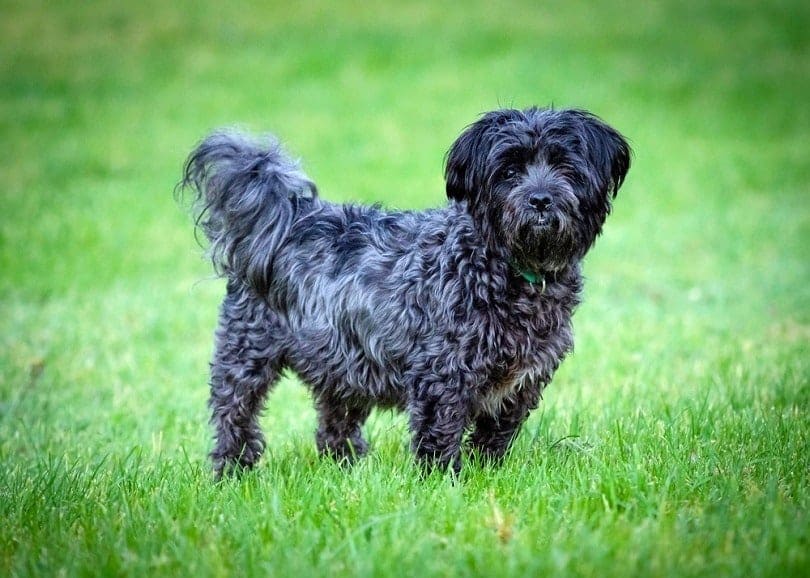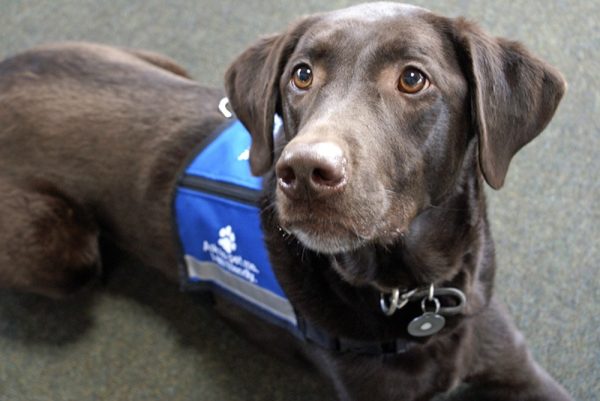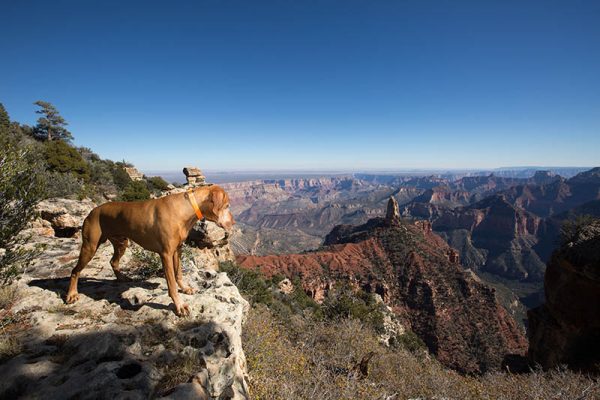In this article
View 8 More +Although originally bred to hunt and kill rats, a reduction in the breed’s size as a result of intentional breeding saw the Affenpinscher become a companion dog rather than a working dog. Today, the breed is a loving companion that gets along best with adults but despite being loyal dogs, they don’t usually want to be held on your lap for too long, and they don’t appreciate play that is too rough.
They are intelligent but can be quite stubborn, so can pose a bit of a training challenge. But they only have moderate exercise requirements and are a good choice for owners who want a loving dog that doesn’t need to be handled and loved constantly.
Breed Overview
Height:
9–12 inches
Weight:
7–10 pounds
Lifespan:
12–14 years
Colors:
Black, silver, gray, red, beige, tan
Suitable for:
Adults looking for a loyal but not overly demanding dog
Temperament:
Loyal, intelligent, somewhat stubborn, not overly clingy
Independent is perhaps the best word to describe the Affenpinscher. While it is loyal to its family, it has a mind of its own and can come across as being a little stubborn, which means it can be a challenge for first-time owners to train. It also doesn’t appreciate rough handling, which negates rough play and means that children need to be respectful of the breed.
With moderate exercise requirements and being generally hardy and resilient, the Affenpinscher is a good choice of pet for owners who don’t want to have to attend to their dog’s emotional needs 24 hours a day.
Affenpinscher Characteristics

Affenpinscher Puppies

Affenpinschers are a somewhat uncommon breed, although breeders can be found if you’re willing to put in the work to search. Always do your due diligence when choosing a breeder. Ensure they have their dogs screened for common problems and that they have good accommodation where the puppies and parents can live before they are bought.
The puppies themselves are small and they are proud, as most pedigree dogs are. They enjoy playing, but they can be quite sensitive and don’t take well to rough or aggressive play. Because of this, they don’t always get along well with children, although this will depend on the individual’s experience with young people. Start socializing and training early to ensure your Affenpinscher will get along with people young and old, and that it will be accommodating of strangers. Socialization is also important to ensure that the Affenpinscher doesn’t give chase to any animal or moving object it sees.
Although the Affenpinscher is a purebred, you might find one in a rescue or shelter. Dogs are often abandoned because of a change in the owners’ circumstances or, as is possible in the case of the Affenpinscher, because the dog didn’t get along with children in the house. Speak to the shelter and ask for any history they have, although it is unlikely that you will be able to get a full history. The rescue should have a good understanding of the dog’s character and temperament, however, and whether it gets along well with other animals.
Temperament & Intelligence of the Affenpinscher
Although the Affenpinscher was originally bred as a ratter, selective and intentional breeding saw a reduction in the size of the breed and it became a popular companion dog, rather than a working dog. Today’s Affenpinscher is a loyal and affectionate dog, although it won’t necessarily want to spend long hours curled up on your lap, preferring to show its affection in other ways.
The breed does have moderate exercise requirements and a playful nature, but it doesn’t appreciate rough play. It will enjoy chasing a ball and can do well in some agility events, but is less likely to enjoy tug or fighting games.
The breed is not known to be overly vocal which, when combined with its size and moderate exercise requirements, makes it a good choice for apartment dwellers. It won’t disturb the neighbors and should get enough exercise from daily walks and indoor play sessions.

Are These Dogs Good for Families? 👪
Affenpinschers are loving dogs, but they don’t appreciate rough treatment, even during play. Children will need to be respectful of the dog to enjoy a good relationship with it.
Although the Affenpinscher is unlikely to get aggressive, it might nip if pushed and pulled around too much, and if it is being treated roughly, it can lead to stress and anxiety for the dog while also making it difficult for the dog and owners to form a close bond. Otherwise, the breed will get along with older children who know how to play respectfully, and it will form a close bond with adult owners.
Does This Breed Get Along with Other Pets?
The Affenpinscher will typically get along with other dogs, and even cats, in the household. However, the same rules apply to pets as they do to children. If another dog acts aggressively and roughly, the Affenpinscher might respond with growling or even snapping. As is the case when introducing any new dog to a household of existing pets, make introductions gradually and carefully. It takes time, but it sets everybody up for a better home life with fewer arguments and fights.
The Affenpinscher is a toy breed, and it suffers from the same small dog syndrome as other toy breeds. It won’t back down from taking on much bigger dogs if it feels threatened or defensive, so you will need to take care when walking or if you have a bigger dog at home that can get bossy.

Things to Know When Owning an Affenpinscher:
Although it is believed that the Affenpinscher was first bred in the 17th Century, reliable records only really exist from the 19th Century. It is known that the Affenpinscher, which means “Monkey Dog” in German, was originally bred as a ratter before it was bred down in size and became a companion breed. Today, it is considered a toy companion dog and has the attitude and affection to match.
Breed standards were first developed for this German dog at the beginning of the 20th century and were formalized in 1913. These standards were adopted by the American Kennel Club in 1936. As was true of many German breeds, World War II saw a decline in the popularity of the breed, but this soon revived in the 1950s. Despite this slight resurgence, the Affenpinscher remains a rare breed today, which means prospective owners will have to put in some leg work to find a breeder.
Although it is considered intelligent, the Affenpinscher also has a reputation for being stubborn, which can make it a bit of a challenge to train. However, this independence is appealing to some potential owners. It means that you won’t have to spend every hour of the day with your Affen. In fact, this isn’t a companion breed that relishes being on your lap all the time.
If you are considering buying or adopting one of this breed, you will need to consider the information below.
Food & Diet Requirements 🦴
This is a small dog, typically only weighing up to around 10 pounds. This means that it has fairly minimal dietary requirements. Expect to feed a cup of good-quality kibble every day. If you choose to feed wet food, follow the feeding guidelines on the packet. And, if a vet has recommended that you increase or decrease feeding amounts, follow these guidelines.
You can give treats, or use them to aid in your training efforts, but you must figure these into daily feeding calculations. No more than 10% of your dog’s daily calorie intake should come from treats, and you should adjust the amount of food you give according to the calories that are given as treats. If your dog is food-oriented and likes its biscuits, you can use dry kibble as low-value treats and intersperse these with high-value treats for especially tricky training techniques.
Always allow your dog to have free access to fresh drinking water, throughout the day and night.

Exercise 🐕
The Affenpinscher is a lively little pup and while it doesn’t have excessive exercise requirements, it does need regular walks, of at least 30–45 minutes per day. Many Affenpinschers enjoy longer walks and you can take yours on hikes and partake in other activities. The smaller size of the breed means even if your dog gets tired while out on a long hike, you can pick it up and carry it back to the car.
Although its size tends to exclude the Affenpinscher from strength-based activities, it can do very well in agility and even agility-based events like flyball and agility classes are a good way to socialize and train your pup.
Training 🎾
Socializing and training are important stages in your dog’s development. The Affenpinscher is considered a stubborn breed, which means training can be a little more challenging than with a breed like the Border Collie, but the Affenpinscher is intelligent enough to learn, as long as you can make training sessions fun and keep them short.
Training will generally start with house training, which can be a challenge with any toy breed. Establish a feeding routine early, and use this to predict when your little Affenpinscher is likely going to need to go to the toilet. Be vigilant and if you see them building up to wee or poop, take them outside, watch, and wait without interrupting. Offer lots of praise and a reward when they do their business.
Accidents will happen. Don’t admonish your dog for going indoors, but do clean up the mess quickly. Be consistent with taking them out and offering praise and rewards and it will come eventually.
Socialization is also important for young dogs. It means introducing your dog to new people, other animals, and to unusual situations. It will ensure that your Affenpinscher is confident no matter what incidents occur and who they meet.
Puppy classes are a good way to combine training and socialization. You meet other puppy owners, and their puppies, in a controlled environment, and you will also learn the basics of training so that you can train your dog in the future.

Grooming ✂️
The coat of the Affenpinscher is rough and somewhat harsh. The medium-length coat tends to be shaggier around the head. The breed doesn’t shed much but it does require regular stripping. This can be done by hand or using a stripping tool, and it removes dead hairs that can become uncomfortable and cause matting. Weekly brushing will also be necessary to keep the dog looking neat and tidy.
Other grooming requirements include nail clipping and tooth brushing. Nails will need to be trimmed every couple of months and if you aren’t comfortable doing this yourself, you can have a professional groomer do it for you. Teeth should be brushed at least three times a week, to help avoid plaque and tartar building up and prevent tooth decay.
Health and Conditions 🏥
Although generally a healthy dog, the Affenpinscher is prone to certain conditions and illnesses, many of which are common among toy and small breeds. Some of the most common include patellar luxation which occurs when the bones of the patella do not line up properly and, in turn, can lead to arthritis.
Legg-Perthes Disease is another condition common to small breeds and is a deformity of the hip joint. Other forms of hip dysplasia may also present, while heart murmurs can be a sign of heart-related problems that will need to be monitored.
- Cataracts
- Heart Murmurs
- Hip Dysplasia
- Lick Granuloma
- Patellar Luxation
Male vs Female
Male Affenpinschers are taller and a little heavier than females. The male is more likely to take on other dogs but will enjoy playing more than the female, who can be moody. However, the temperament of a dog is more greatly affected by the individual character and the dog’s history than by its sex.
3 Little-Known Facts About the Affenpinscher
1. Affenpinscher Means Monkey Terrier
The Affenpinscher is a German breed that originated in the 17th Century. Its name means “Monkey Terrier” in German, given to it because of its protruding bottom jaw and lip as well as its monkey-like facial appearance.
2. They’re Not Afraid of Anything
Bred originally as a ratter, it’s hardly surprising that the Affenpinscher is a brave dog. And, since it has been bred down in size, it has also developed the small dog syndrome that a lot of toy breeds exhibit. This means that your Affenpinscher will not be afraid to go up against other dogs, even much larger breeds. Ensure good socialization from a young age to help counteract this, to some degree.
3. Affenpinschers Make Very Good Watch Dogs
Although the breed is considered quiet, it will bark if it senses any kind of threat, and it is an alert terrier breed. As such, the Affenpinscher can make a very good watchdog. It will keep an eye on the house and let you know of any possible threats.

Conclusion
The Affenpinscher is a rare breed that was first bred in Germany in the 17th century. While it was first raised as a ratter, it was bred down in size and became popular as a companion dog. Having suffered a dip in popularity after World War II, the Affenpinscher did regain some followers in the 1950s, but it is still an unusual breed that can be difficult to find.
It has moderate exercise requirements and is generally classified as being a hypoallergenic breed because it sheds less than other breeds. That coat does require some regular maintenance, however, to prevent it from getting matted and causing discomfort for your little Pinscher. You will need to take care if keeping an Affenpinscher with small children because it doesn’t tolerate rough handling well, and you should expect your Affenpinscher to be willing to take on much bigger dogs.
Featured Image Credit: Didkovska Ilona, Shutterstock



















